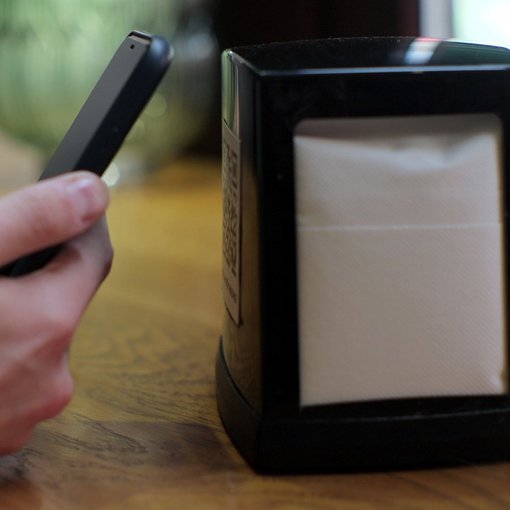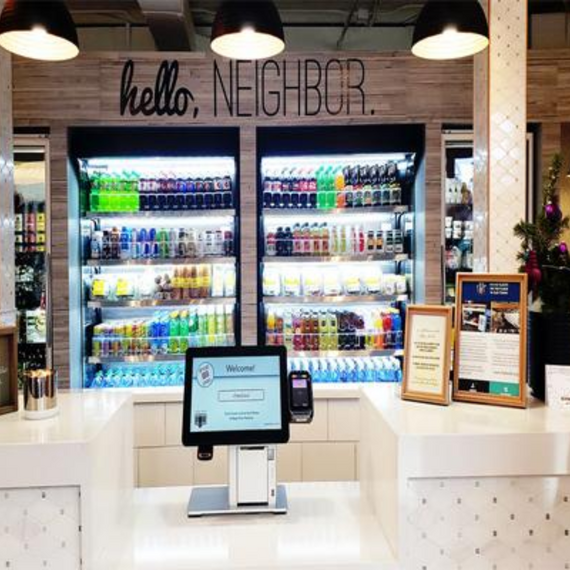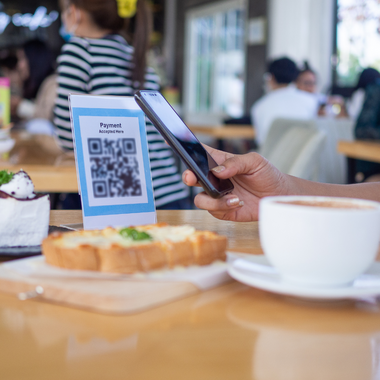
- Four minutes read
How restaurants in the US can benefit from using QR codes & payments
QR codes that allow customers to order and pay-at-table are on the rise in the U.S., improving the restaurant experience without sacrificing the quality of service.
The pandemic has forever changed the restaurant industry. From the days during lockdowns when restaurants were closed and only allowed to deliver food, to when diners commonly wore a mask while being escorted to their table, the restaurant experience has seen a dramatic shift. As part of this broader change, QR codes, formerly an integral part of restaurants' COVID-19 safety protocol, are becoming a standard dining feature for U.S. restaurants.
With the rise of on-demand delivery and easy-to-use technology, customers have become more time-pressured and now expect quick service at all points of the dining experience --- from ordering, to getting the bill and paying. In the U.S. – where handheld mobile point of sale (POS) adoption has tended to lag Canada and Europe – there has been a significant increase in the use of QR codes. Diners can scan the QR codes provided on the cards or labels on tables to access menus and even pay their bills. This technology has multiple advantages for customers, employees and businesses.
Better customer experiences
With QR codes on the table, customers can access the restaurant’s menu, order, and pay for food and drinks as and when they want. Some payment technologies even allow customers to start an online tab and pay the bill at the end, so diners can initiate and complete their transactions without having to wait for a server.
Mobile payment options accessed by scanning a QR code also allows customers to select from different pre-set tip amounts or specify the tip amount themselves. This functionality removes the hassle and time spent on calculating the right tip amount.
Boosting employee satisfaction
Many restaurants have struggled with staff shortages over the past few years and QR codes for ordering and payments can play a role in battling this.
Implementing QR codes can help reduce pressure placed on staff during their shift. As they no longer need to bring physical menus nor spend time moving between the table and the cashier to settle a customer’s bill, they can focus on other tasks like serving other customers, handling delivery orders, and clearing tables. Making their jobs simpler and easier and alleviating their workload means that staff might be more satisfied and could be more likely to stay with the business for longer.
The streamlined customer experience associated with mobile POS systems ensures that diners are also more likely to leave larger tips which will also result in happier employees. After all, it is much easier for customers to pay and leave a tip when the amount is automatically calculated by the payment system as opposed to figuring out how much they need to add to their bill.
Reduced expenses and increased retention
Implementing QR codes for menus and payments can have other positive impacts for restaurant businesses. Removing the need for physical menus and the extensive amounts of receipt paper associated with traditional POS terminals can help to reduce expenses and the restaurant’s bottom line overall.
Furthermore, at a time when small businesses like restaurants face significant pressure to acquire and retain customers, QR codes and mobile payments can help them to recruit loyal customers for life. As well as improving the overall dining experience, this could include rewards programs or by setting up loyalty points for repeat customers.
What the future holds for U.S. restaurant payments
Restaurants are adapting to the changes in dining experience. According to a recent Lightspeed hospitality report, 87% of restaurant owners acknowledge that new technology adoption over the last two years has been critical for the survival of their businesses. As QR codes become more popular in the U.S., it is imperative for more restaurants to embrace this technology in order not to be left behind, and we expect adoption to grow.
It is no secret that U.S. restaurants have been relatively slow in integrating mobile POS compared to what we are seeing in other countries. It seems likely that the growth of QR codes could serve to stimulate the adoption and normalization of mobile payments and lead American diners to embrace pay-at-table like their counterparts do in Canada and Europe.




